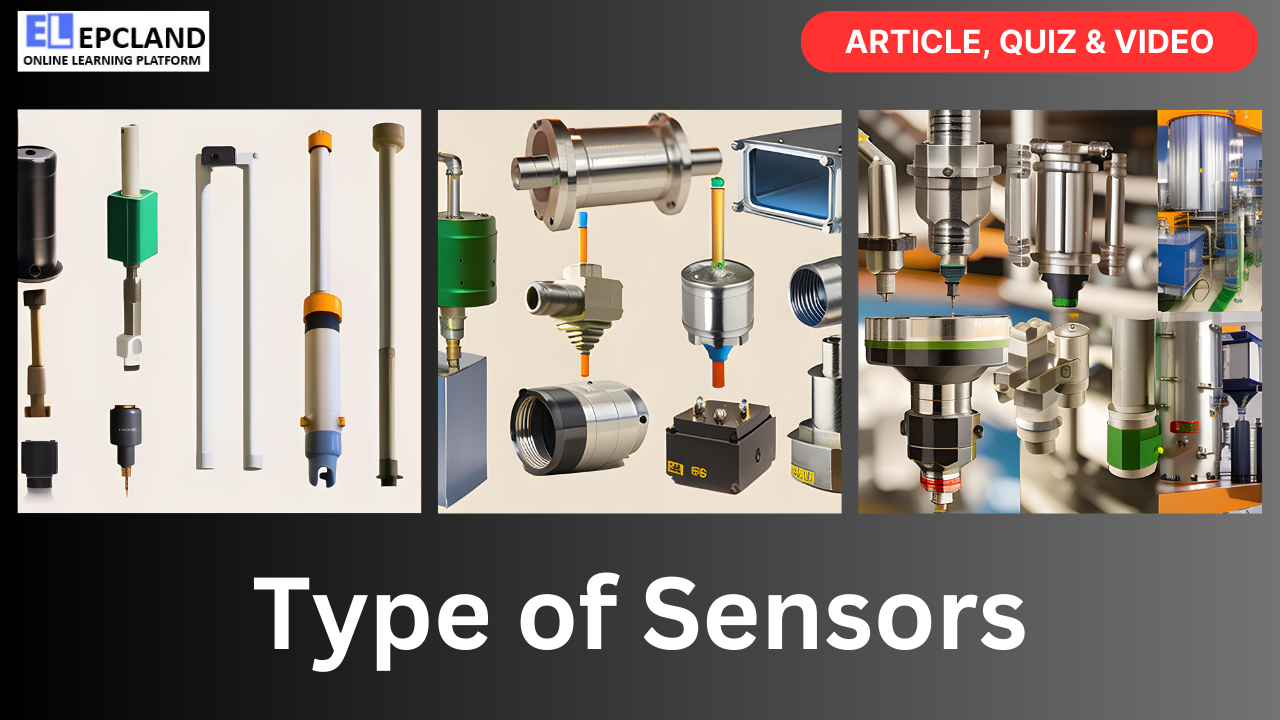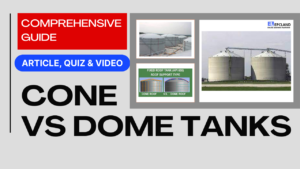The Oil and Gas Industry is known for its complexity and the vast array of operations involved in the exploration, extraction, transportation, and processing of hydrocarbons. Key to the success and safety of these operations are sensors. Sensors play a crucial role in monitoring various parameters, ensuring the integrity of equipment, and mitigating risks. In this comprehensive article, we will explore the different types of sensors used in Oil and Gas Industry projects, their applications, and their significance in maintaining the efficiency and safety of this vital sector.
Introduction to Sensors in the Oil and Gas Industry
Sensors are devices that detect changes in physical parameters and convert them into electrical signals or other forms of data. In the Oil and Gas Industry, sensors are indispensable tools for acquiring real-time data and making informed decisions. They are employed in diverse applications, ranging from monitoring well conditions to ensuring the safety of personnel and the environment.
Significance of Sensors
The Oil and Gas Industry operates in challenging environments, including remote offshore platforms and harsh desert landscapes. Sensors provide critical information to operators and engineers, allowing them to respond quickly to changing conditions. This helps prevent accidents, optimize processes, and minimize downtime.
Do not miss the detailed course 7 Modules of Piping Codes & Standards
Enrollment link
Types of Sensors and Their Applications
1. Pressure Sensors
Pressure sensors are among the most common sensors used in the industry. They measure pressure levels within equipment and pipelines and are essential for ensuring the safe and efficient transport of fluids. Applications include:
- Monitoring wellbore pressure during drilling operations.
- Detecting pressure changes in pipelines to prevent leaks.
- Controlling the pressure in refining and processing equipment.
2. Temperature Sensors
Temperature sensors are crucial for maintaining equipment integrity and process efficiency. They are used to measure temperatures in various components and applications such as:
- Monitoring the temperature of drilling fluids to prevent equipment damage.
- Controlling the temperature in distillation columns during refining.
- Ensuring safe operating temperatures for equipment.
3. Flow Sensors
Flow sensors measure the rate of fluid movement, which is vital for processes involving the transfer of hydrocarbons. Their applications include:
- Monitoring the flow of crude oil through pipelines.
- Measuring gas flow rates in natural gas processing.
- Controlling the flow of chemicals in injection systems.
4. Level Sensors
Level sensors are used to determine the level of liquid or solid materials in tanks, vessels, and other containers. They are instrumental in:
- Preventing overfilling or underfilling of storage tanks.
- Monitoring the level of drilling mud in wellbore.
- Ensuring consistent liquid levels in refining processes.
5. Gas Sensors
Gas sensors are essential for detecting the presence of hazardous gases and ensuring the safety of personnel and facilities. Applications include:
- Detecting the presence of toxic or flammable gases in confined spaces.
- Monitoring emissions from industrial processes to comply with environmental regulations.
- Early warning systems for gas leaks.
6. Chemical Composition Sensors
The composition of hydrocarbons and other fluids is critical in the Oil and Gas Industry. Sensors such as gas chromatographs and spectrometers are used for:
- Analyzing the composition of natural gas.
- Measuring the quality of crude oil.
- Ensuring product specifications in refining processes.
7. Vibration Sensors
Vibration sensors help detect abnormal vibrations in rotating equipment like pumps, compressors, and turbines. They are essential for:
- Predictive maintenance to prevent equipment failures.
- Monitoring the health of rotating machinery.
- Reducing downtime and maintenance costs.
8. Acoustic Sensors
Acoustic sensors, including hydrophones and sonar systems, are used for underwater applications, especially in offshore drilling and subsea operations. Their applications include:
- Detecting leaks in underwater pipelines.
- Studying underwater geology and seafloor conditions.
- Monitoring marine life and environmental impacts.
9. Position and Displacement Sensors
Position and displacement sensors are used to measure the movement of components and equipment. They are employed in applications like:
- Monitoring the position of valves in control systems.
- Measuring the displacement of drill strings during drilling operations.
- Ensuring the alignment of equipment in offshore installations.
Advanced Sensors and Emerging Technologies
The Oil and Gas Industry continuously seeks more advanced sensor technologies to enhance efficiency, safety, and environmental performance. Some emerging sensor technologies include:
1. Fiber-Optic Sensors
Fiber-optic sensors offer high sensitivity and immunity to electromagnetic interference. They are used for distributed temperature sensing and detecting strain in pipelines and structures.
2. Wireless Sensors
Wireless sensor networks are gaining popularity for remote monitoring in challenging environments. They can transmit data over long distances without the need for extensive cabling.
3. Nanotechnology Sensors
Nanotechnology is enabling the development of miniaturized sensors with high sensitivity. These sensors can be deployed in tight spaces and harsh conditions.
4. Smart Sensors
Smart sensors are equipped with onboard processing capabilities, allowing them to perform data analysis and transmit processed data, reducing the load on central control systems.
Sensor Integration and Data Analytics
In the Oil and Gas Industry, the deployment of sensors is just one part of the equation. The data collected by sensors are often vast and complex. To extract actionable insights, data analytics and integration are essential:
Data Integration
Integrating data from various sensors and systems provides a holistic view of operations. This integration helps identify correlations and anomalies that might not be apparent when examining data from individual sensors.
Predictive Maintenance
Data analytics can predict equipment failures and maintenance needs based on sensor data. This approach minimizes downtime and reduces maintenance costs.
Safety and Compliance
Sensors play a critical role in ensuring compliance with safety and environmental regulations. Data analytics can help monitor emissions, detect leaks, and trigger safety protocols.
Challenges in Sensor Deployment
While sensors offer significant advantages, their deployment in the Oil and Gas Industry is not without challenges:
Harsh Environments
Many oil and gas operations occur in extreme environments, including high temperatures, high pressures, and corrosive atmospheres. Sensors must be rugged and reliable under such conditions.
Data Security
With increasing connectivity, the industry faces cybersecurity risks. Ensuring the security of sensor data is paramount, especially in critical infrastructure.
Costs
Deploying and maintaining sensors can be costly. Finding a balance between cost and the benefits of sensor data is a constant challenge.
Conclusion
Sensors are the unsung heroes of the Oil and Gas Industry, providing real-time data that is vital for decision-making, safety, and efficiency. From monitoring pressures and temperatures to detecting gas leaks and predicting equipment failures, sensors play a pivotal role in the success of oil and gas projects.
As technology continues to advance, sensors will become even more critical in optimizing operations, reducing environmental impacts, and ensuring the safety of workers and facilities. The Oil and Gas Industry will continue to rely on these essential devices to navigate the challenges and opportunities of the future.
Do not miss the detailed course 7 Modules of Piping Codes & Standards
Enrollment link
FAQs
1. What is the role of sensors in the Oil and Gas Industry?
- Sensors in the Oil and Gas Industry are instrumental in monitoring various parameters, ensuring safety, optimizing processes, and minimizing risks. They provide real-time data critical for decision-making.
2. What are some common types of sensors used in the industry?
- Common sensor types include pressure sensors, temperature sensors, flow sensors, level sensors, gas sensors, chemical composition sensors, vibration sensors, acoustic sensors, and position/displacement sensors.
3. How are pressure sensors used in the Oil and Gas Industry?
- Pressure sensors monitor pressure levels within equipment and pipelines, helping to prevent leaks, control refining processes, and ensure safe drilling operations.
4. What role do gas sensors play in safety within the industry?
- Gas sensors detect the presence of hazardous gases, providing early warnings to prevent accidents and protect personnel and the environment.
5. Why are temperature sensors essential in oil and gas projects?
- Temperature sensors help maintain equipment integrity, ensure process efficiency, and prevent equipment damage caused by extreme temperatures.
6. How are flow sensors used in the industry’s transportation processes?
- Flow sensors measure fluid movement rates in pipelines, ensuring the efficient transport of hydrocarbons while detecting abnormalities.
7. What are some emerging sensor technologies in the Oil and Gas Industry?
- Emerging sensor technologies include fiber-optic sensors, wireless sensors, nanotechnology sensors, and smart sensors, each offering unique advantages for specific applications.
8. How do sensors contribute to predictive maintenance in the industry?
- Sensors provide data that, when analyzed, can predict equipment failures and maintenance needs, reducing downtime and costs.
9. What challenges are faced when deploying sensors in harsh oil and gas environments?
- Challenges include ensuring sensor reliability in extreme conditions, addressing data security concerns, and managing the costs associated with sensor deployment and maintenance.
10. How can data analytics enhance the value of sensor data in the industry?
- Data analytics helps integrate data from multiple sensors, predict maintenance needs, monitor safety and compliance, and optimize operations by identifying correlations and anomalies in sensor data.
Recommended courses (Published on EPCLand)
- Basics of Piping Engineering
- Piping Layout Engineering
- Piping Material Engineering
- Piping Stress Analysis
- Complete Course on Piping Engineering
- Material Requisitions
- Piping Material Specifications
- Valve Material Specifications
Don’t miss the published articles on following:
| Article Name with Link | Article Name with Link |
| Future Trends | Basics of Control Valve |
| Principles of Instruments | Control Valves |
| Advanced Control Strategies | HMI Design |
| Automation | PID Controller |
| Calibration | PLC |
| Remote Monitoring and SCADA |
Related Video
Attempt Quiz
Question 1:
Which type of sensor is commonly used to measure temperature in oil and gas pipelines?
Explanation: Temperature in oil and gas pipelines is commonly measured using a Temperature Sensor.
Question 2:
Which type of sensor is used to detect the presence of toxic gases in the oil and gas industry?
Explanation: Gas Sensors are used to detect the presence of toxic gases in the oil and gas industry.
Question 3:
Which type of sensor is employed to measure the level of liquid in storage tanks?
Explanation: Level Sensors are used to measure the level of liquid in storage tanks.
Question 4:
Which sensor type is suitable for monitoring the flow rate of oil in pipelines?
Explanation: Flow Sensors are used for monitoring the flow rate of oil in pipelines.
Question 5:
Which type of sensor is commonly used to measure pressure in drilling operations?
Explanation: Pressure Sensors are commonly used to measure pressure in drilling operations.



